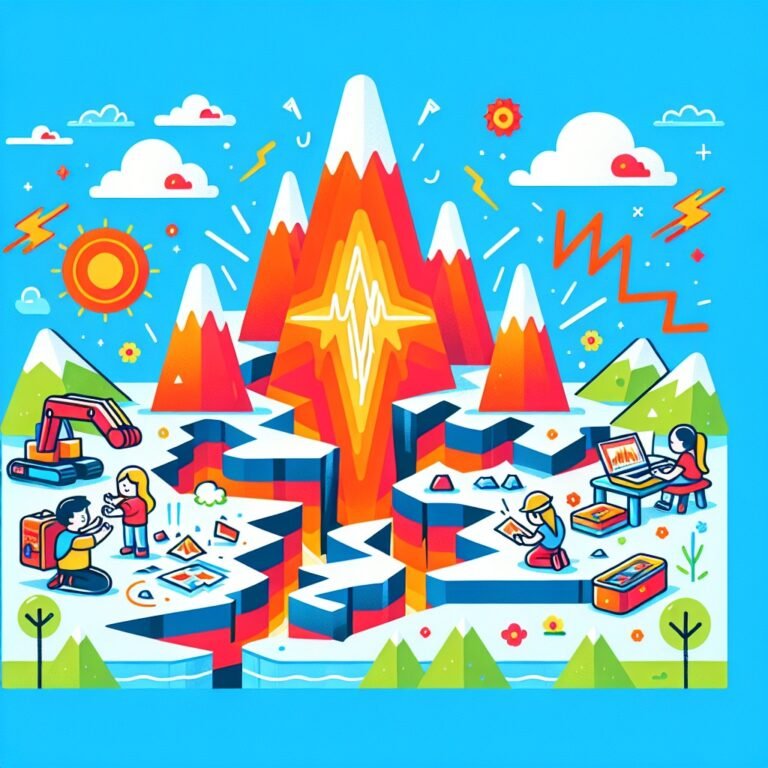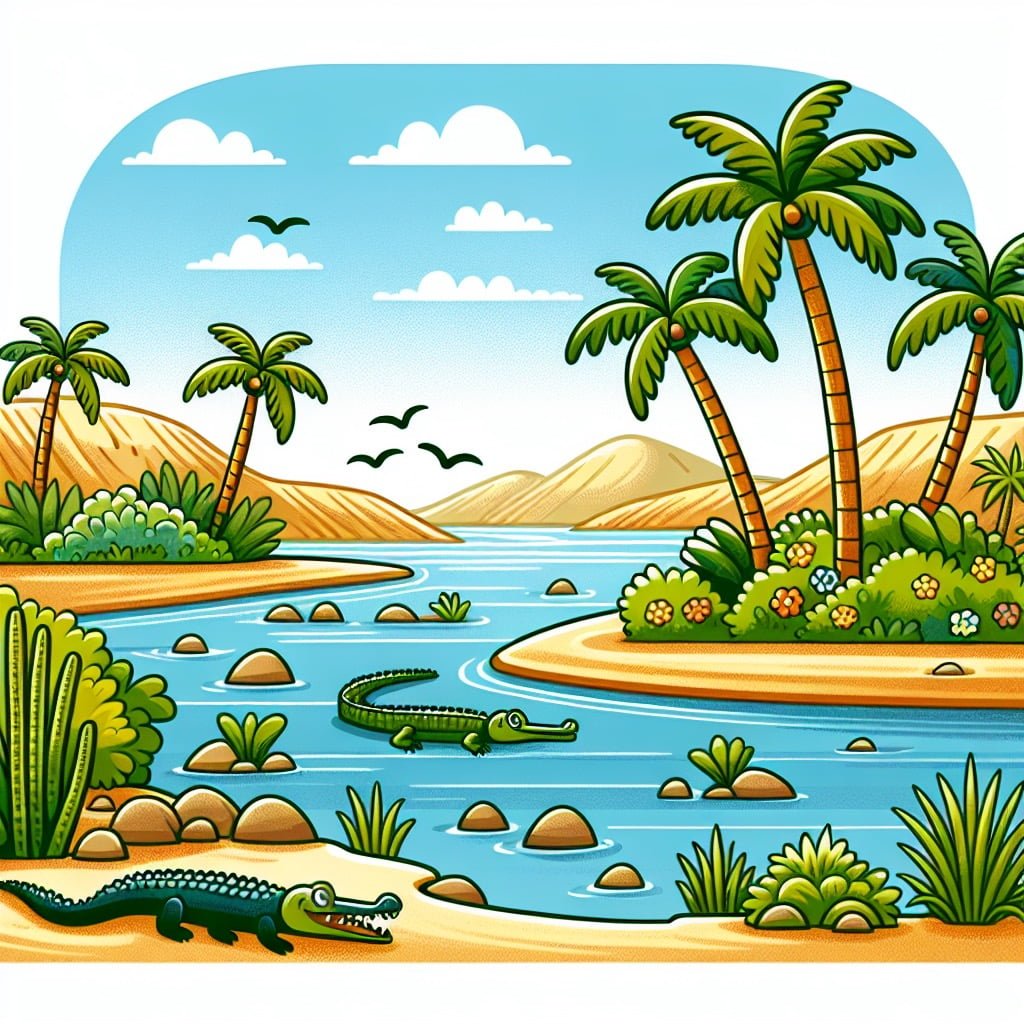Welcome to our blog post on “Earthquake Facts For Kids”! Here, we will explore fascinating information about earthquakes in a fun and educational way. From the occurrence of earthquakes in various regions to the incredible power of the most massive earthquake on record, we will uncover the mysteries behind these natural phenomena. Discover how earthquakes shake the ground, trigger tsunamis, and even how animals can sense them before they happen. Learn about earthquake early warning systems, daily seismic activity around the world, and how seismographs measure the strength of earthquakes. Dive into the Ring of Fire, an earthquake-prone volcanic region, and understand why aftershocks follow major earthquakes. Join us on this exciting journey to explore the intriguing world of earthquakes through engaging facts and captivating images. Get ready to be amazed by the wonders of our Earth’s dynamic and ever-changing nature!
Earthquake Facts For Kids
1. Earthquakes Can Happen Anywhere

For younger kids: Earthquakes can occur in different parts of the world.
For older kids: Earthquakes are not limited to specific regions; they can happen in any location around the globe, whether near faults or away from them.
Detailed explanation:Earthquakes are a fascinating and powerful natural phenomenon that can occur anywhere in the world. It is important for kids to understand that earthquakes are not limited to specific regions or countries, but can happen in any location on the Earth’s surface. This unpredictability is due to the movement of the Earth’s tectonic plates, which are constantly shifting and interacting with each other.
When these tectonic plates suddenly slip or collide, it can create seismic waves that travel through the Earth’s crust, causing the ground to shake. This shaking can range in intensity from barely noticeable to extremely destructive, depending on factors such as the depth of the earthquake and the type of rock the seismic waves pass through.
Because earthquakes can happen anywhere, it is essential for kids to be prepared and know how to stay safe during an earthquake. This includes learning about earthquake drills, creating a family emergency plan, and knowing what to do during and after an earthquake strikes. By understanding the basic facts about earthquakes, kids can feel more empowered and less afraid when faced with this natural disaster.
In conclusion, earthquakes are a natural phenomenon that can occur anywhere in the world. By educating kids about earthquake facts, we can help them be prepared and stay safe in the event of this powerful event.
Earthquake Facts For Kids
2. The Most Powerful Earthquake on Record
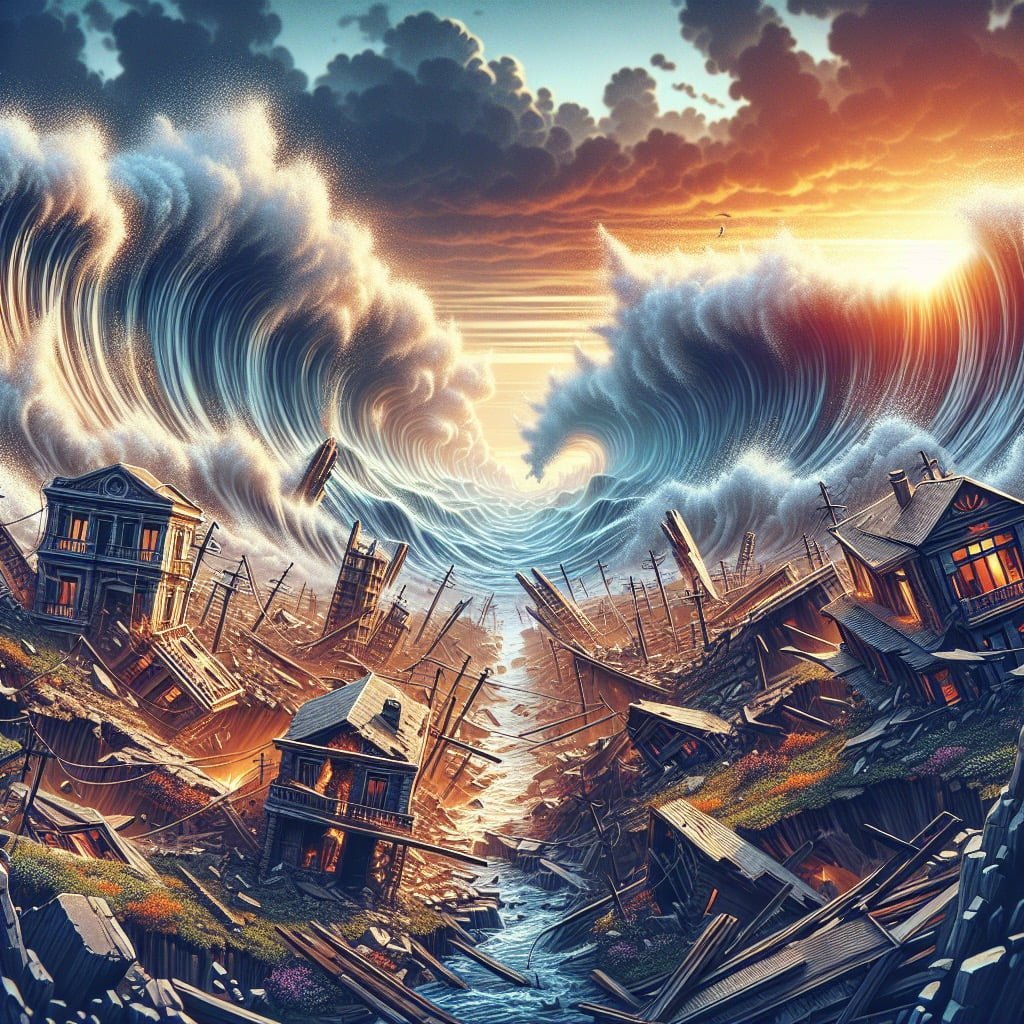
For younger kids: The biggest earthquake ever was really strong!
For older kids: The most powerful earthquake on record was the 1960 Valdivia earthquake in Chile, measuring a magnitude of 9.5 on the Richter scale.
Detailed explanation:The most powerful earthquake on record, according to Earthquake Facts For Kids, was the 1960 Valdivia earthquake in Chile. This devastating event, also known as the Great Chilean Earthquake, occurred on May 22, 1960, and had a magnitude of 9.5 on the Richter scale. The earthquake lasted for approximately 10 minutes and caused widespread destruction in Chile, as well as triggering tsunamis that affected coastal areas as far away as Hawaii, Japan, and the Philippines.
The sheer power of the Valdivia earthquake is difficult to fathom. It released approximately 500 times more energy than the infamous 1906 San Francisco earthquake, which had a magnitude of 7.8. The impact of such a powerful earthquake is immense, with buildings collapsing, landslides occurring, and infrastructure being destroyed. The human toll of the Valdivia earthquake was also staggering, with thousands of people losing their lives and many more being injured.
Studying the most powerful earthquake on record provides valuable insights into the geology of earthquakes and the potential risks associated with seismic activity. Scientists and researchers analyze the data from such events to better understand how and why earthquakes occur, as well as to improve detection and warning systems. By learning from past earthquakes, we can better prepare for future events and work towards minimizing their impact on society and the environment.
In conclusion, the 1960 Valdivia earthquake stands as a stark reminder of the sheer power and destructive force of earthquakes. By studying this event and others like it, we can work towards a better understanding of seismic activity and improve our ability to mitigate the risks associated with earthquakes. Earthquake Facts For Kids provides valuable information for young learners to grasp the significance of such natural phenomena and the importance of being prepared for them.
Earthquake Facts For Kids
3. Earthquakes Shake the Ground
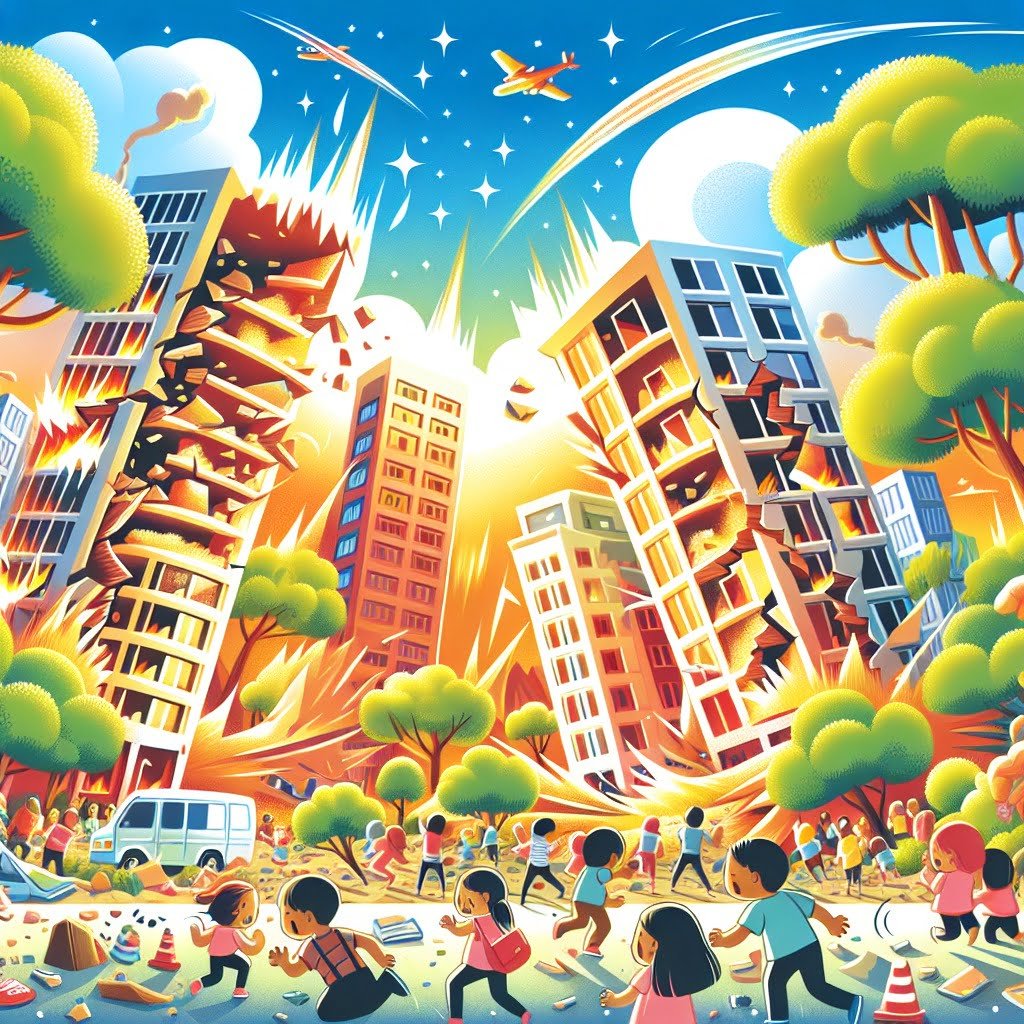
For younger kids: Earthquakes make the ground move like a giant earthquake dance!
For older kids: During an earthquake, the ground shakes due to the sudden release of energy in the Earth’s crust, causing buildings and structures to sway.
Detailed explanation:Earthquakes are natural disasters that occur when there is a sudden release of energy in the Earth’s crust, resulting in seismic waves that cause the ground to shake. This shaking motion is what defines an earthquake and can range in intensity from barely noticeable to extremely destructive.
For kids, understanding why earthquakes shake the ground can be both fascinating and frightening. The Earth’s crust is made up of several large tectonic plates that float on the semi-fluid mantle layer below. These plates are constantly shifting and moving, albeit very slowly. However, when the stress builds up along a fault line where two plates meet, it can eventually overcome the friction holding them together and cause them to suddenly slip past each other. This sudden movement releases a massive amount of energy in the form of seismic waves, which radiate outwards and cause the ground to shake.
The shaking during an earthquake can vary depending on several factors, such as the magnitude of the quake, the depth at which it occurred, and the distance from the epicenter. Strong earthquakes can result in violent shaking that can last for several minutes, causing buildings to collapse, roads to crack, and landslides to occur.
Learning about earthquake facts for kids can help them understand the natural processes that lead to these shaking events and can also teach them how to stay safe during an earthquake. By knowing what to do during an earthquake, such as dropping to the ground, taking cover, and holding on to something sturdy, kids can be better prepared to protect themselves in the event of a sudden tremor. It is important to educate children about earthquake safety so they can be better equipped to handle such emergencies.
Earthquake Facts For Kids
4. Earthquakes Can Trigger Tsunamis
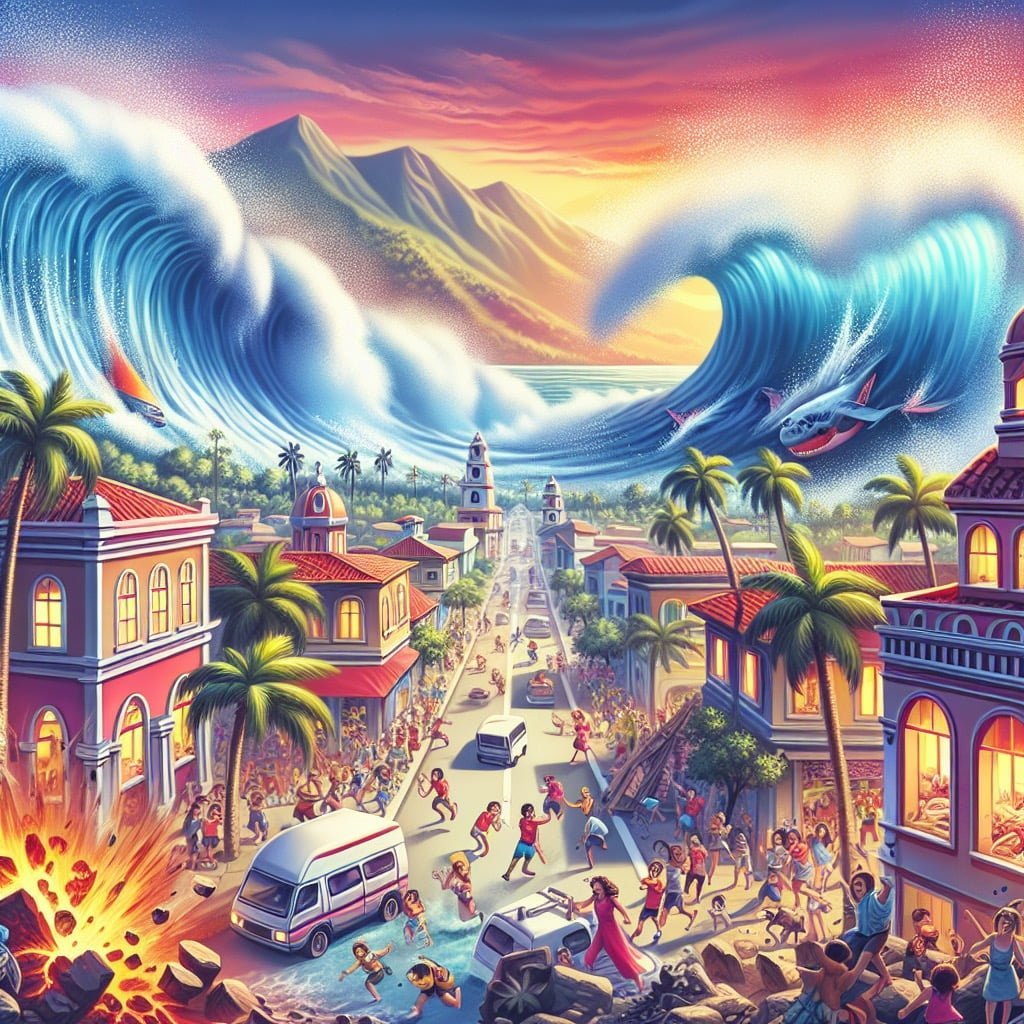
For younger kids: Sometimes big waves called tsunamis happen after an earthquake.
For older kids: Powerful earthquakes, especially those under the sea, can generate tsunamis—giant waves that can travel across oceans and cause devastation along coastlines.
Detailed explanation:Earthquakes are natural phenomena that occur when there is a sudden release of energy in the Earth’s crust, resulting in seismic waves. These seismic waves can cause the ground to shake violently, leading to destruction of buildings, loss of lives, and widespread devastation. However, one of the lesser-known consequences of earthquakes is their ability to trigger tsunamis.
Tsunamis are large ocean waves caused by underwater earthquakes, landslides, or volcanic eruptions. When an earthquake occurs underwater, it can displace a large volume of water, creating a series of powerful waves that travel across the ocean at high speeds. These waves can grow in height as they approach the coastline, causing massive flooding and widespread damage to coastal communities.
For kids learning about earthquake facts, it is important to understand the potential impact of tsunamis. Tsunamis can travel thousands of miles across the ocean, making it crucial for coastal regions to have early warning systems in place to alert residents of an impending tsunami. In areas prone to earthquakes, preparedness and education are key in minimizing the impact of both earthquakes and tsunamis.
In conclusion, earthquakes have the potential to trigger tsunamis, which are giant ocean waves that can cause catastrophic damage to coastal areas. By understanding the connection between earthquakes and tsunamis, kids can learn about the importance of safety measures and emergency preparedness in the event of a natural disaster. Earthquake facts for kids should include information about tsunamis to ensure a comprehensive understanding of the potential dangers associated with seismic activity.
Earthquake Facts For Kids
5. Animals Can Sense Earthquakes

For younger kids: Some animals can feel an earthquake before it happens!
For older kids: Certain animals like dogs, cats, and birds have been known to exhibit unusual behavior before an earthquake, possibly due to their acute senses that can detect changes in the environment.
Detailed explanation:Animals have long been known to possess a heightened sensitivity to natural disasters, including earthquakes. Scientists have observed animals exhibiting unusual behavior just before an earthquake occurs, suggesting that they can sense the seismic activity before humans can. This phenomenon has been documented in various species, including birds, fish, and domestic animals.
One possible explanation for this ability is that animals are more attuned to subtle changes in their environment, such as the vibrations and electrical signals that precede an earthquake. For example, some researchers believe that certain animals can detect the release of gases and charged particles from the Earth’s crust that occur before an earthquake. This sensitivity may be due to their acute sense of hearing, smell, or even their ability to detect electromagnetic fields.
In addition to their heightened senses, animals may also rely on their instincts for survival. Many animals have evolved to respond to threats in their environment in order to protect themselves and their offspring. When they sense an earthquake coming, they may seek shelter or move to higher ground to avoid danger. This instinctual behavior may be rooted in their evolutionary history, as animals that were able to detect and avoid natural disasters were more likely to survive and pass on their genes.
Overall, the fact that animals can sense earthquakes is a fascinating example of the incredible abilities of the natural world. By studying how animals react to seismic activity, scientists can gain valuable insights into the mechanisms behind earthquakes and potentially improve early warning systems for humans. Earthquake Facts For Kids can be a great way to introduce young learners to the fascinating world of geology and animal behavior.
Earthquake Facts For Kids
6. Earthquake Early Warning Systems

For younger kids: Scientists have ways to give us a heads up before an earthquake.
For older kids: Some countries have earthquake early warning systems that can provide alerts a few seconds to minutes before the shaking starts, giving people precious time to take cover.
Detailed explanation:Earthquake early warning systems are crucial tools in helping to reduce the impact of seismic events on communities. These systems work by detecting the initial shockwaves of an earthquake and quickly analyzing the data to determine the location and magnitude of the event. This information is then used to send out alerts to areas that may be affected, giving people valuable seconds or even minutes to take cover or evacuate before the more destructive shaking arrives.
One of the key components of earthquake early warning systems is a network of seismometers placed strategically throughout regions that are prone to earthquakes. These sensors can detect the first, less damaging primary waves of an earthquake, known as P-waves, which travel faster than the more damaging secondary waves, known as S-waves. By analyzing the data from multiple seismometers, the system can quickly estimate the location and magnitude of the earthquake.
Earthquake early warning systems are especially important for densely populated areas near fault lines, where earthquakes can cause significant damage and loss of life. In regions like Japan, Mexico, and California, where seismic activity is common, these systems have already proven to be effective in providing advance warning of earthquakes.
Overall, earthquake early warning systems are a crucial tool in helping to minimize the impact of seismic events on communities. By providing advance notice of earthquakes, these systems can save lives, reduce injuries, and limit damage to infrastructure. It is important for communities to invest in and maintain these systems to ensure that they are prepared for the next inevitable earthquake.
In conclusion, Earthquake Facts For Kids, earthquake early warning systems play a vital role in keeping communities safe in the event of seismic activity.
Earthquake Facts For Kids
7. Earthquakes Happen Every Day
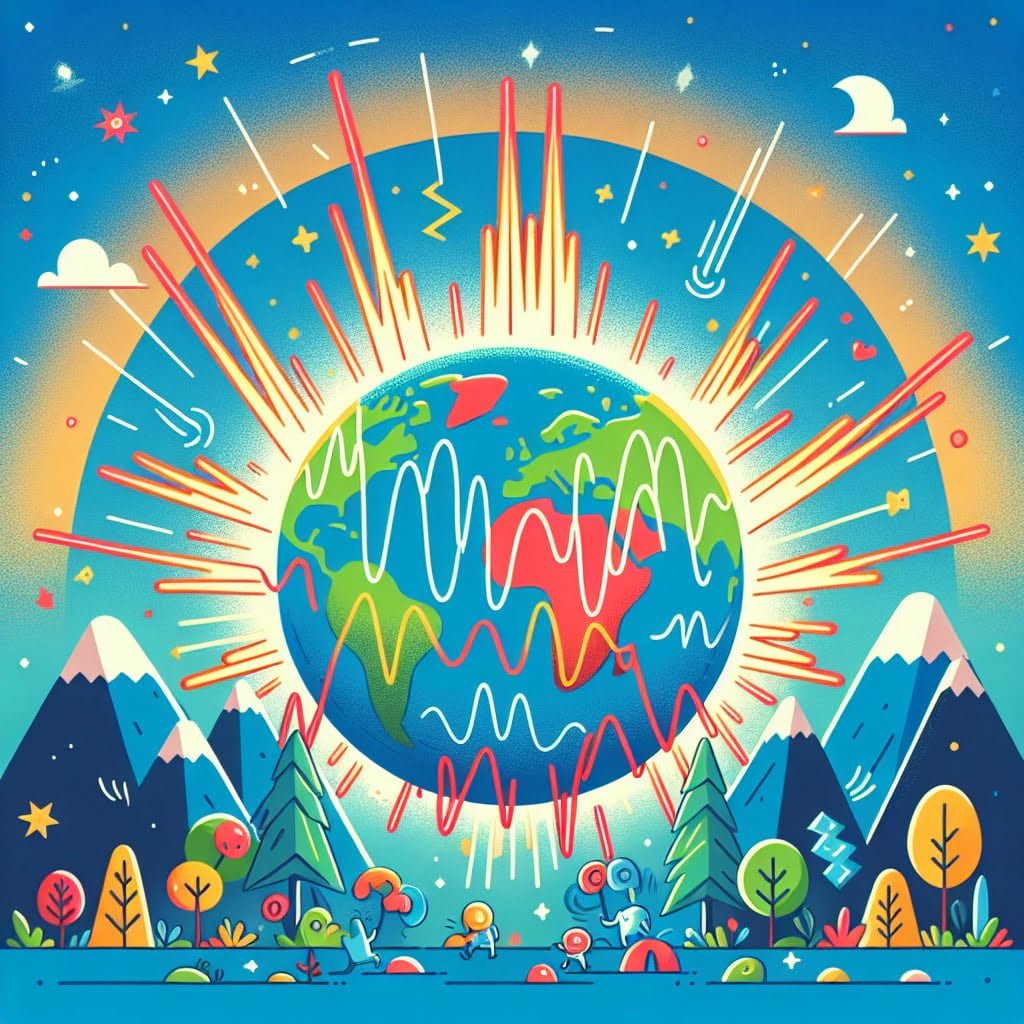
For younger kids: Earthquakes happen every day somewhere in the world!
For older kids: While not all earthquakes are felt, numerous small tremors occur daily worldwide, most of which are too minor to be noticed by people.
Detailed explanation:Earthquake Facts For Kids: Earthquakes are a common occurrence on our planet, with seismic activity happening every day. While not all earthquakes are felt by humans, the Earth’s crust is constantly in motion, leading to vibrations and shaking at various points around the globe.
These daily earthquakes can vary in magnitude, from small tremors that go unnoticed to larger quakes that can cause significant damage. The majority of earthquakes occur along tectonic plate boundaries, where the Earth’s plates are in constant motion and can sometimes get stuck, leading to a build-up of pressure that is released in the form of an earthquake.
For kids learning about earthquakes, it’s important to understand that these natural phenomena are a normal part of the Earth’s geology. Through careful monitoring and research, scientists are able to predict where earthquakes are more likely to occur, helping to minimize the impact on human populations.
In regions prone to earthquakes, such as the Ring of Fire around the Pacific Ocean, building codes are designed to withstand seismic activity to protect lives and property. Earthquake drills and preparedness plans are also put in place to ensure that communities are ready to respond to a sudden quake.
By learning about earthquake facts for kids, young learners can gain a better understanding of the science behind these natural events and how they can affect the world around them. With continued research and education, we can work towards better predicting and preparing for earthquakes in the future.
Earthquake Facts For Kids
8. Seismographs Measure Earthquakes

For younger kids: Scientists use special machines to measure how strong an earthquake is!
For older kids: Seismographs are instruments used to record the energy waves produced by earthquakes, helping scientists determine the magnitude and location of seismic events.
Detailed explanation:Seismographs are instruments used to measure and record the vibrations caused by earthquakes. These devices are essential in studying and understanding seismic activity, as they provide valuable data that helps scientists analyze the intensity, duration, and location of earthquakes.
Seismographs work by detecting the movement of the ground during an earthquake. They consist of a mass suspended on a spring within a stationary frame. When the ground shakes, the frame moves with it, but the mass inside remains relatively still due to inertia. This relative motion between the frame and the mass is amplified and recorded on a rotating drum or digital display, creating a seismogram.
By analyzing the seismogram, scientists can determine important characteristics of the earthquake, such as its magnitude and epicenter. The magnitude of an earthquake is a measure of the energy released at the source, while the epicenter is the point on the Earth’s surface directly above where the earthquake originated.
Seismographs are crucial tools in monitoring and studying seismic activity around the world. They help scientists predict and prepare for earthquakes, assess the damage caused by them, and improve building codes to make structures more resilient to seismic waves. Overall, seismographs play a vital role in advancing our understanding of earthquakes and their impact on society.
In conclusion, seismographs are essential instruments that provide valuable data for studying earthquakes. They are vital tools in monitoring and analyzing seismic activity, helping scientists better understand and prepare for these natural disasters. Earthquake Facts For Kids should be explained in simple terms to educate children about the importance of seismographs in earthquake research.
Earthquake Facts For Kids
9. The Ring of Fire is Earthquake-Prone
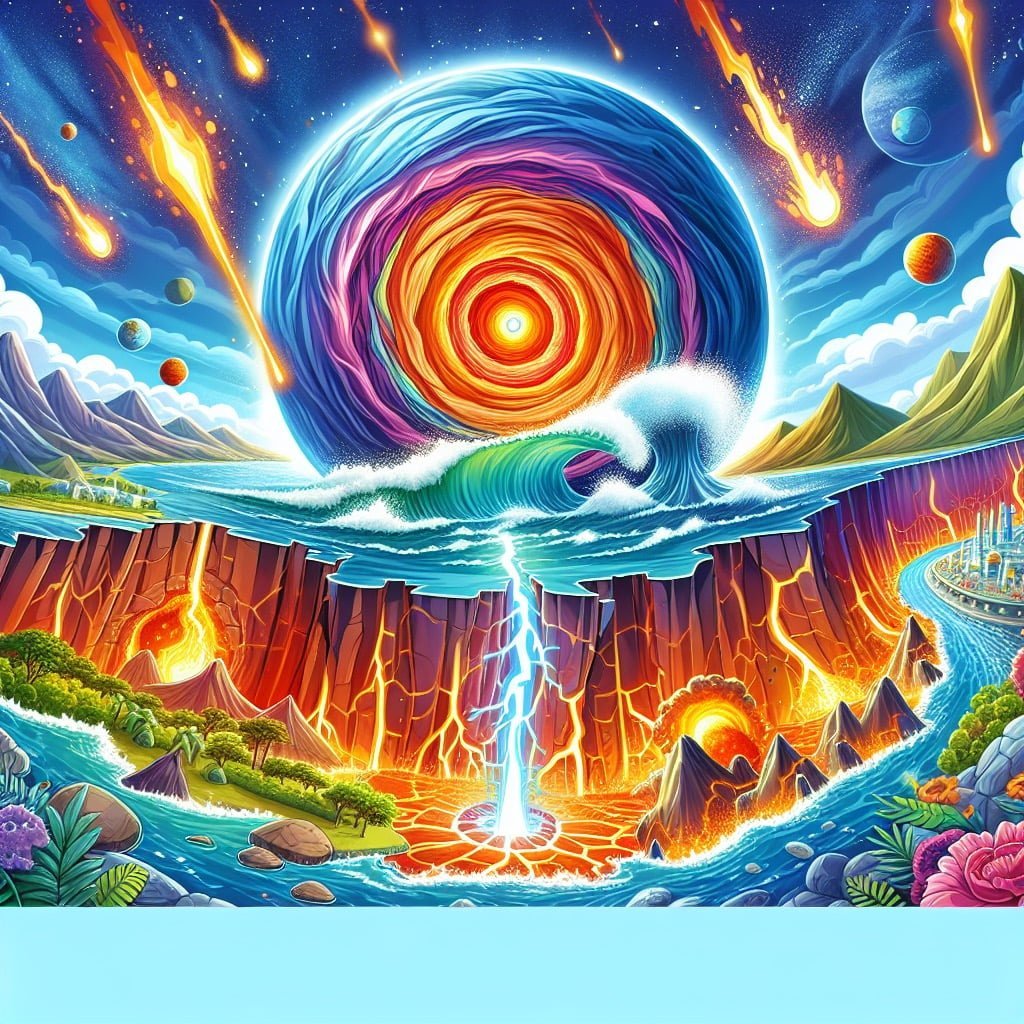
For younger kids: The Ring of Fire has lots of earthquakes and volcanoes!
For older kids: The Ring of Fire is a horseshoe-shaped region in the Pacific Ocean known for its frequent earthquakes and volcanic activity due to tectonic plate movements.
Detailed explanation:The Ring of Fire is a horseshoe-shaped zone in the Pacific Ocean where a large number of earthquakes and volcanic eruptions occur. It is known for being one of the most earthquake-prone regions in the world. This area is home to about 75% of the world’s active volcanoes and is responsible for approximately 90% of the world’s earthquakes.
The reason behind the high seismic activity in the Ring of Fire is the movement of tectonic plates. The Ring of Fire is located along the edges of several tectonic plates, including the Pacific Plate, the Philippine Sea Plate, and the Juan de Fuca Plate. These plates are constantly moving, either colliding with each other, pulling apart, or sliding past one another. This movement causes stress to build up along the plate boundaries, which is eventually released in the form of earthquakes.
In addition to the movement of tectonic plates, the Ring of Fire is also home to subduction zones. Subduction zones occur when one tectonic plate is forced beneath another plate. This process can lead to the formation of deep trenches and can also result in powerful earthquakes and volcanic eruptions.
Because of the high level of seismic activity in the Ring of Fire, it is crucial for residents of the countries bordering this region to be prepared for earthquakes and tsunamis. Earthquake drills, early warning systems, and building codes that can withstand seismic activity are just some of the measures that can help mitigate the impact of earthquakes in this earthquake-prone area.
In conclusion, the Ring of Fire is a prime example of an earthquake-prone region due to the movement of tectonic plates and the presence of subduction zones. It serves as a reminder of the dynamic nature of our planet and the need for preparedness in the face of natural disasters.
Earthquake Facts For Kids
10. Aftershocks Follow Major Earthquakes
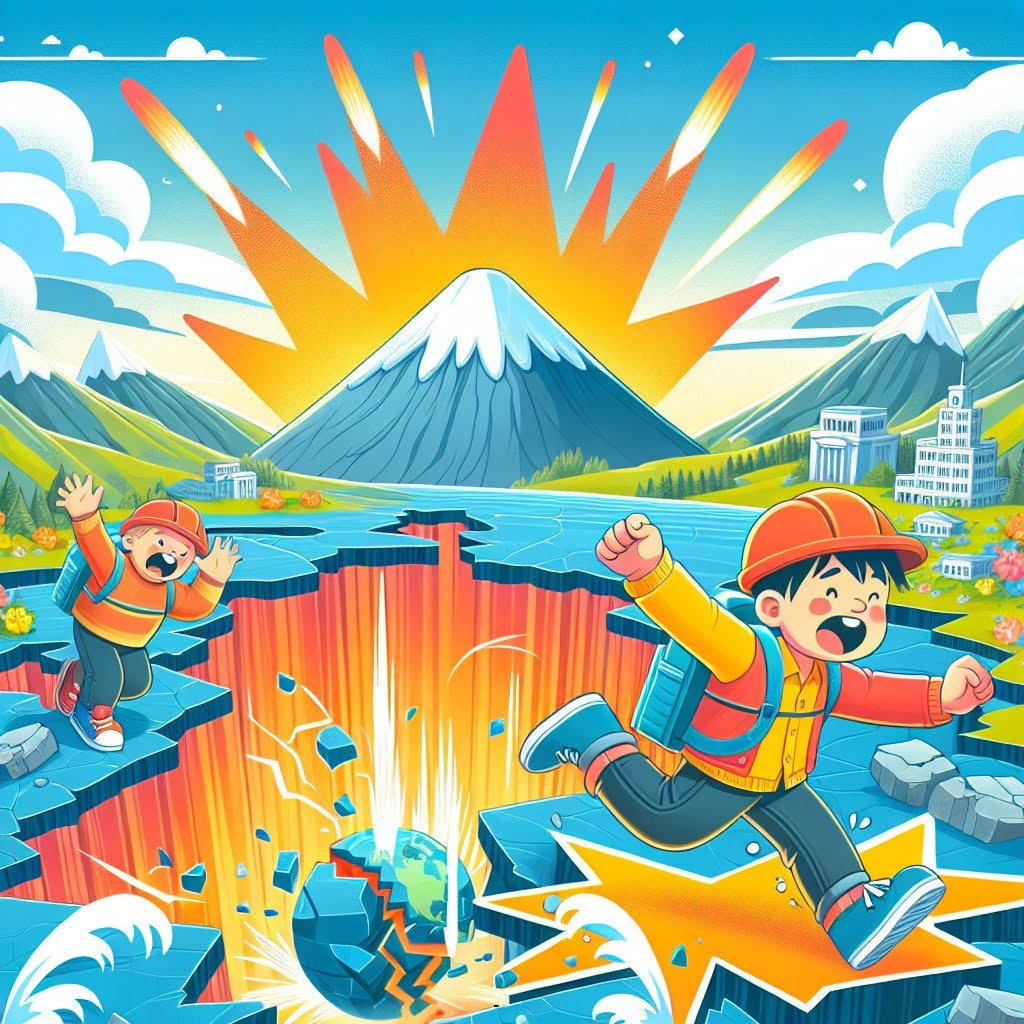
For younger kids: Aftershocks are like smaller earthquakes that can happen later.
For older kids: After a significant earthquake, aftershocks—smaller tremors that follow the main event—can occur for days, weeks, or even months after the initial quake.
Detailed explanation:Earthquake Facts For Kids: Aftershocks, which are smaller earthquakes that occur in the same area after a major earthquake, are a common occurrence following seismic activity. These aftershocks can be just as powerful and destructive as the initial earthquake, causing further damage to buildings and infrastructure.
Aftershocks are the result of the earth’s crust adjusting to the movement caused by the initial earthquake. As the tectonic plates shift and settle into a new position, stress is released along fault lines, leading to additional seismic activity. This process can continue for days, weeks, or even months after the initial earthquake, with the frequency and intensity of aftershocks gradually decreasing over time.
One important thing to note is that aftershocks are not always smaller than the initial earthquake. In some cases, aftershocks can be just as powerful or even stronger than the main event, posing a significant risk to people and property in the affected area. This is why it is crucial for communities to be prepared for aftershocks and to follow safety protocols, such as staying away from damaged buildings and seeking higher ground if there is a risk of a tsunami.
Overall, understanding the phenomenon of aftershocks is essential for children and adults alike to grasp the full impact of earthquakes and to be better prepared for future seismic events. By learning about aftershocks and their potential dangers, individuals can take proactive steps to protect themselves and their communities in the event of a major earthquake.
Did you know?
Did you know that the energy released during the 1906 San Francisco earthquake was equivalent to detonating 1.6 million tons of TNT?
Summary of Earthquake Facts For Kids
This engaging blog post covers a variety of fascinating facts about earthquakes that are sure to captivate kids of all ages. From the surprising revelation that earthquakes can happen anywhere in the world to the incredible power of the most powerful earthquake ever recorded, this post is packed with information that will pique the curiosity of young readers. The post also delves into how earthquakes shake the ground, the relationship between earthquakes and tsunamis, and even how animals can sense earthquakes before they happen. Additionally, readers will learn about earthquake early warning systems, daily occurrences of earthquakes, and the importance of seismographs in measuring seismic activity. The blog also touches on the Ring of Fire, an earthquake-prone region in the Pacific Ocean, and explains how aftershocks can follow major earthquakes. With colorful images and easy-to-understand explanations, this post is a must-read for any child with an interest in science and the natural world. So, whether you’re a young reader eager to learn more about earthquakes or an older kid looking to deepen your knowledge on the subject, this blog post is sure to provide plenty of educational and entertaining insights into the fascinating world of seismic activity.
Sources and additional information for Earthquake Facts For Kids
WikipediaBritannicaEnvironmental Protection Agency (EPA)National Oceanic and Atmospheric Administration (NOAA)The Nature ConservancyWorld Wildlife FundEarth Day NetworkGreenpeace InternationalJane Goodall InstituteEnvironmental Protection Agency (EPA)World Wildlife Fund – ConservationNature ConservancyGreenpeaceUnited Nations Environment Programme (UNEP)Conservation InternationalEarthwatch InstituteEnvironmental Defense FundSierra Club
